Introduction
Air travel is the fastest means of travelling over long distances. The city of London has six major international airports. The airfields include Heathrow, Luton, Gatwick, Stansted, Southend, and City. When combined, the airdromes form the busiest landing field in the world in terms of passengers ferried. In terms of aeroplane movements, the airstrips are ranked as the second busiest in the world.
In this paper, the author will discuss different aspects of the six major London airports. The paper will be in three parts. The first part will entail a discussion of the consequences of physical design and capacity limitations of London City Airport. In part two of the report, the author will evaluate the strategy adopted by the London Metropolitan to deal with its six airports. The final part will entail an analysis of an alternative strategy for London and its airports.
Part One
The figure below shows London’s location on the world map:
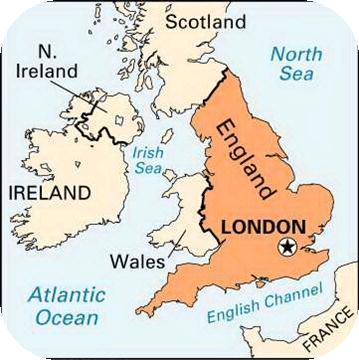
London City Airport: An Overview
London City Airport is an international airfield that connects the metropolitan with other parts of the world. The landing field is situated in the Royal Docks in the London Borough of Newham. According to Graham (2013), the airport was developed in 1986. It was constructed by an engineering company called Mowlem. Over the decades, the airstrip has served millions of passengers. In 2015, for example, more than 4.3 million commuters used the facility. The figure was an increase of 18.4% in the number of commuters served during the 2014 financial year (Eriksson & Steenhuis 2015).
Physical Design and Capacity
The design of London City Airport is characterised by a number of facilities. The airfield consists of 1,508 meter long runway. The runway is surrounded by a water mass in the Royal Albert Dock and King Gorge V Harbour. The airport also has various terminals, airside facilities, and operational buildings. Other features of the airport include ancillary facilities, apron, and surface access points. The figure below shows London City Airport’s physical design:

Terminal
London City Airport’s terminal is a key feature of the design of the facility. It is considered to be one of the smallest compared to those of other airfields, such as Stansted, Heathrow, and Luton. The single, two-storey terminal building contains a number of facilities. The facilities are aimed at providing different services to the passengers (Marques, Simoes, & Carvalho 2015). The facilities include check-in counters, shops, and catering outlets accessed by commuters from different airliners. The airliners include Air France, British Airways, and Lufthansa Airlines. There is also an airside waiting area.
Transport system
The design of London City Airport features access points for different ground transportation means. The forms of transport connected to the airdrome include Docklands Light Railway, local buses, and road access. Docklands Light Railway connects the airport to such vicinities as London’s new financial district at Canary Wharf and Stratford International Station (Eriksson & Steenhuis 2015). Another area linked to the airport by rail is the traditional financial district of the City of London.
In terms of road access, the London City Airport is served by A112 and A1020 roads. The boulevards offer passengers quick links to such areas as Canning Town and Stratford. In addition, the roads offer easy and fast access to M11and M25 motorways (Graham 2013).
Capacity
The port is small in terms of both measure and dimension. Consequently, the airfield accommodates a fewer number of planes compared to other airstrips in London, such as Luton, Stansted, and Gatwick. However, the airdrome’s size facilitates speedy transit through the terminals. The reason is that the departure lounges in the terminal building accommodate about 400 passengers. The numbers reduce boarding and check-in times.
By 2015, London City Airport had a capacity of about 5 million passengers per annum. According to Woolford and Warner (2015), the airfield’s management aims at increasing the maximum capacity to 8 million commuters per year. However, the expansion plans do not cover a second runway.
Currently, the airport has two passenger piers. They are the eastern and western piers. The two link the terminal to aeroplane stands. The western pier, for example, handles 70% of the departure gates. However, the port’s management plans to increase the size by 84% by the summer of 2016. The expansion will add 600 seats to the terminal lounges (Eriksson & Steenhuis 2015).
Consequences of Physical Design and Capacity
London City Airport has recorded significant success since its development. However, its physical design and capacity have had various restraints to the airfield over the decades. The short runway and its steep landing angle, for example, restrict large and wide-bodied aircraft from using the airport. The biggest aeroplane that can carry out its operations in the airstrip is Airbus A318 (Graham 2013). The figure below shows one of the airlines operating at London City Airport:
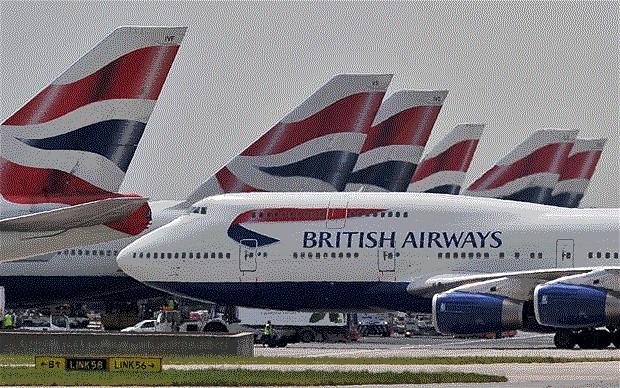
The airport’s location, design, and capacity limit its ability to exploit its full potential and meet the growing passenger demands. In 2015, the port registered an 18% increase in the number of commuters. The figure is expected to increase in the future. However, the airfield cannot be expanded further because it is surrounded by water bodies on both sides.
The small terminal building has a number of consequences to the airport. According to Eriksson and Steenhuis (2015), the terminal can only accommodate about 400 passengers waiting to board their flights. In addition, the building has few facilities and services to cater for all the commuters.
The Strategy of London as a City
An Overview of the City of London and the Aviation Industry
The city’s aviation sector benefits both the metropolitan and its customers (Heathrow and Gatwick Airports 2014). On its part, the industry benefits London’s economy by enhancing the annual GPD. In addition, the six major airports connect the metropolis to other cities and countries. In terms of customers, the airfields offer a wide range of destinations and services to passengers travelling for leisure or business purposes. The figure below shows locations of airports within the city of London:
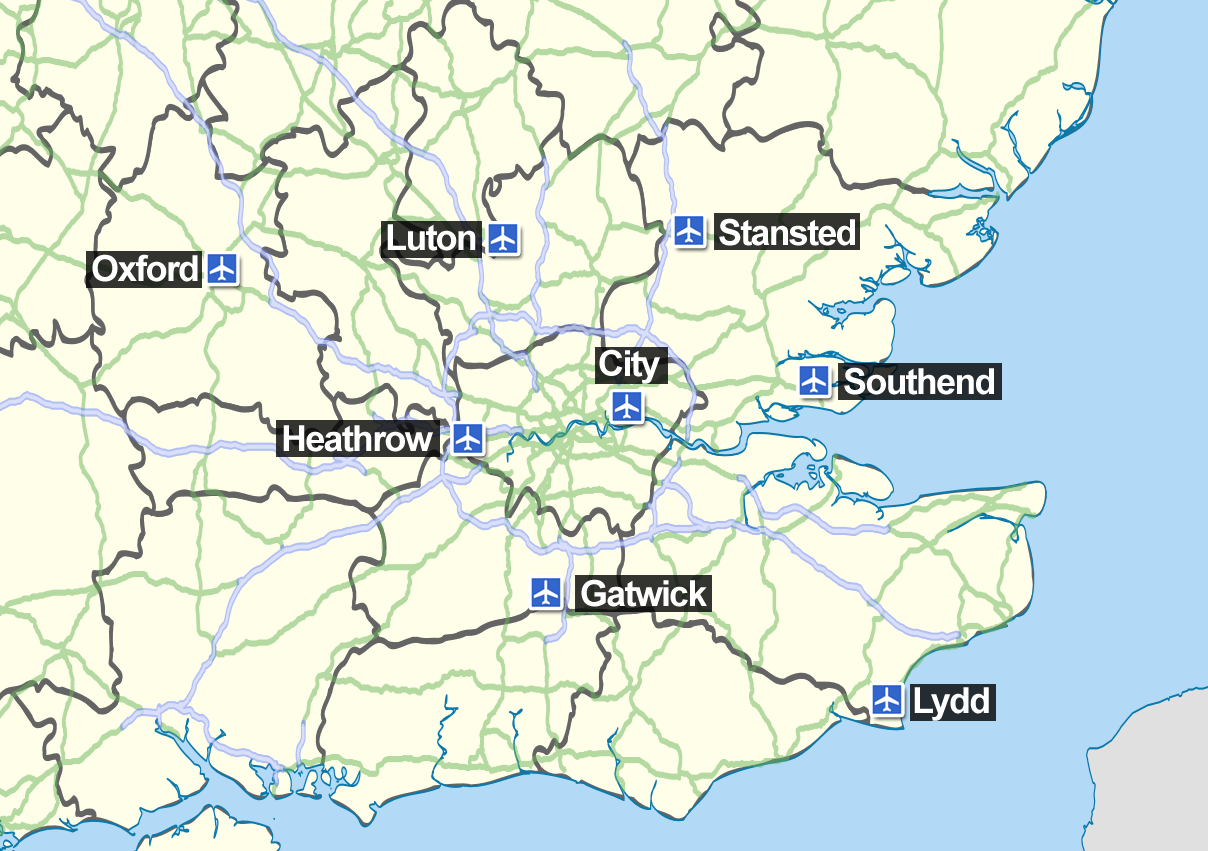
Over the decades, London has experienced extensive growth and change. As a result, the aviation industry in the metropolitan has evolved significantly (Graham 2013). The actions and approaches are taken by the authorities in London to ensure positive change in the industry include privatisation, liberalisation, and commercialisation of airports.
The importance of the aviation sector to London is expected to grow over the next decade. The key driver of growth is the increased number of passengers using the airports (Graham 2013). To ensure that the airfields carry out their operations as required, meet customers’ demands, and contribute to the economy, the government has developed a number of strategies. The strategies include improving the infrastructure, expanding the capacity of the airports, increasing runways, and constructing new airfields. In addition, the city has developed measures to reduce the global and local environmental impacts associated with airfields.
London City’s Strategies
Infrastructural improvements
London has six main airports. It transports millions of passengers annually to different destinations. To access the airdromes, commuters use different transport channels, such as roads and rail (Woolford & Warner 2015). Over the years, the city has faced numerous congestion and traffic issues. The primary aspect associated with the problem is an increase in the number of passengers using the airports. Transport issues, which are associated with missed flights, have prompted the government to adopt various infrastructure improvement plans.
One of the transport improvement plans is the construction of new rail lines to link the airports with different streets across London. Eriksson and Steenhuis (2015) note that in 2015, the London City Transport Department made plans to construct a new rail line to connect Stansted Airport and Liverpool Street. If implemented, the strategy will have numerous benefits to passengers and to the metropolitan.
The new rail line, which will extend from east to north London, will reduce the time used to access Stansted Airport to around 30 minutes. In addition, the improvement strategy will enhance the airfield’s competitive advantage and economic gains. The figure below depicts a rail line in London:
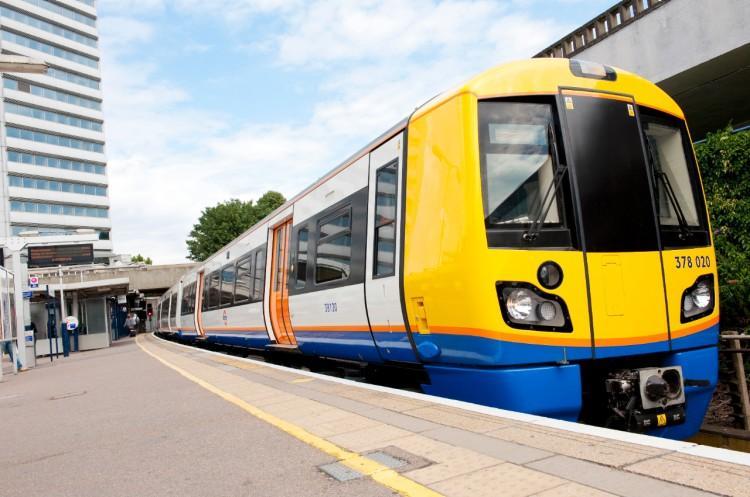
Another infrastructure improvement strategy aimed to ensure fast access to airports within London is the extension of Docklands Light Railway to Dagenham Dock. Currently, the rail ferries more than 100 million passengers annually (Woolford & Warner 2015). The transport network serves commuters wishing to access such areas as London City Airport, Stratford, Lewisham, and Woolwich.
London also plans to improve transport systems linking different streets with Gatwick Airport. Currently, Gatwick is the best-connected airfield by both rail and road. However, the increasing number of passengers requires metropolitan and airports to work together and expand the transport system. The improvement strategies include the doubling of rail capacity by 2020, upgrading M25 and M23 roads, and ensuring a train departs after every 2.5 minutes. If the plans are successfully implemented, 15 million passengers will be ferried to and from Gatwick Airport within 60 minutes (Heathrow and Gatwick Airports 2014).
Expanding airports
The increase in population, passengers, and demand for air transport has forced the government to collaborate with airport executives to expand airfields. The expansion strategies entail the construction of more terminals, runways, and a new airport (Graham 2013). Currently, congestion remains a major issue for most airports across the globe. Some of the airfields operating at full capacity in London include Heathrow and Gatwick.
Heathrow’s expansion
Heathrow, which has undergone a number of expansions, is considered to be one of the busiest airports in Europe. In 2015, the airfield handled approximately 75 million passengers. The volume was attributed to the high number of airlines using the airfield. The facility serves more than 80 airlines flying to 185 locations in 84 nations (Heathrow and Gatwick Airports 2014). In spite of the numerous expansions in recent years, the airport operates at over 99% capacity. As a result, the airfield has minimal space for more flights. The reason is that planes lack landing slots needed to carry out their services. The figure below depicts Heathrow Airport:
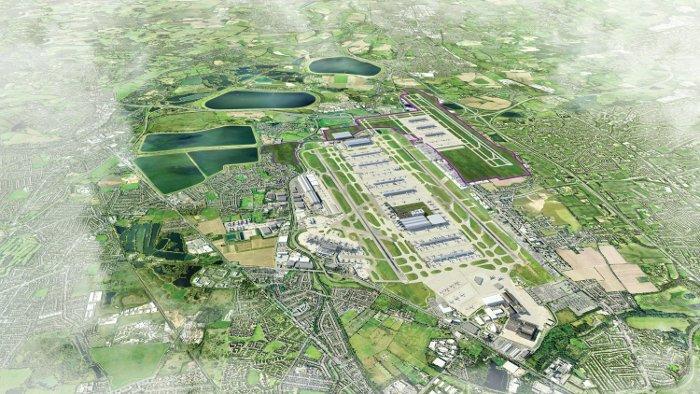
The expansion strategies employed by London and Heathrow Airport executives include the construction of more terminals and the use of the airfield’s two runways in a mixed-mode. The building of additional terminals allows the airport to accommodate more passengers in departure lounges and offer more services to meet commuters’ demands (Graham 2013). On its part, the stretching and use of the two current runways in a mixed-mode are expected to increase the airport’s flight movements and ease delays.
Gatwick Airport’s expansion
Gatwick is the second-largest and busiest airport in the United Kingdom. The airfield has a single-use runway. In addition, it handles 55 aeroplane movements per hour. In 2015, the airport handled 40.3 million passengers (Eriksson & Steenhuis 2015).
The figure is a 5.7% increase from the number of commuters served in 2014. The continuous increase of passengers and airlines has led to extreme congestion in the airfield. Strategies adopted by the city of London and Gatwick Airport include the building of a second runway and third terminal. The use of two runways and an additional terminal will allow the airfield to handle more passengers. In addition, the plan will add more landing slots and increase flight movements.
If the strategy is well-executed, the second runway will be complete and ready for use by 2025. Upon completion, the runways can be used in two ways. The first option entails using the two airstrips simultaneously for both landing and takeoff. The second alternative involves using one runway for landing and the other for takeoff. If the first option is adopted, the airdrome’s capacity will be increased by 80%. In addition, the aeroplane movement will be 100 per hour.
As a result, the maximum number of commuters that can be handled is expected to rise from 45 million to 87 million annually. The implementation of the second alternative will increase the capacity by 36% and aircraft movements to 75 per hour. The move will increase passenger handling capacity to 82 million (Heathrow and Gatwick Airports 2014). The figure below shows Gatwick Airport’s gate:
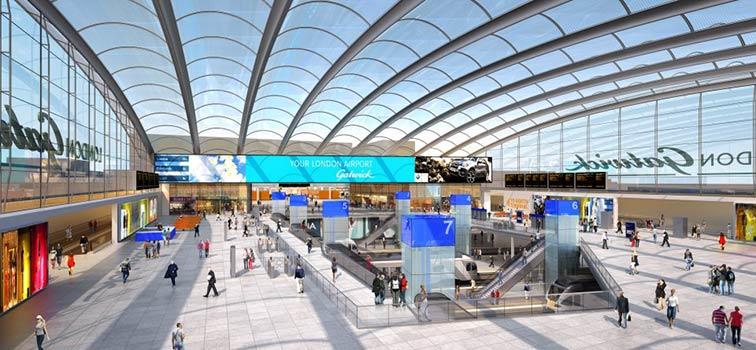
Construction of new airports
The strategy of building new airports is aimed at easing congestion in the already crowded airfields in London. The major proposal is the building of Thames Hub Airport on the Isle of Grain in Kent. The new airdrome’s design incorporates four runways, freight logistics, and rail. If the plan is implemented as required, the airport will be opened in 2029. Woolford and Warner (2015) note that its capacity will be 110 million commuters per year.
The travel duration from London to the landing field will be 26 minutes when using high-speed rail. Other benefits associated with the construction of the new airdrome include arrival and departure of planes 24 hours a day and reduced public funding. In addition, there will be no need for more runways in Gatwick and Heathrow Airports. The location of the airfield will allow for flexible and easy expansion in the future. It will also improve the connection between rail, road, and sea transport within one hub.
Confirmation and Alternative Strategy for the City of London
London has had economic and infrastructural benefits brought about by its six main airports (Heathrow and Gatwick Airports 2014). However, the metropolitan and landing fields have faced numerous challenges. The concerns include the overcrowding of airfields and terminals. Others are lack of landing slots, failure to offer all air services to the passengers, and rapid population increase.
Confirmation of Current Strategies
Multi-airport system
To manage the issues affecting London and its airports, the metropolitan has adopted the concept of Multi-Airport Systems (MAS). The airfield is a set of airdromes serving the airline traffic of the city area. In the London metropolis, the system is made up of the six major airports. The units are classified as London/Gatwick, London/ Southend, London/Luton, London/City, and London/Stansted. According to Graham (2013), MAS creates a balance between social and economic goals. In spite of the airports being under one system, they carry out their operations and strategies independently.
However, each party in MAS must assure each other that it will take into account the consequences of their choices. The MAS eases congestion and effectively serves London’s 8.63 million population (Woolford & Warner 2015). In addition, the system generates ample financial and economic gains for the city. It also improves efficiency and operations at airports. Another benefit associated with MAS is the increased passenger capacity in secondary airfields, such as Luton, Stansted, City, and Southend.
In spite of the numerous benefits associated with MAS, the system has a number of constraints. One of them includes limited development. The concern is associated with the use of regulatory tools to influence traffic distribution within the landing fields (Graham 2013).
Recommendations for Future Plans
Future Expansion
Numerous expansion projects have been proposed and some carried out in Heathrow and Gatwick. The strategies include the construction of new terminals and runways. In addition, there have been plans to build new airfields in East London. The reason for focusing on Heathrow and Gatwick is that the landing fields are the busiest and biggest in London. The expansion procedures, when complete, will provide more space for airlines and meet the travelling needs of the increasing number of passengers caused by a rise in population (Heathrow and Gatwick Airports 2014). In addition, more flight movements will increase the revenue generated by London and its airports. As a result, there will be huge economic advancements.
The expansion plans are expected to have significant benefits in the future. However, the primary problem associated with the strategies entails the fact that the construction duration takes too long. In addition, a lot of financial resources are required to facilitate improvements (Graham 2013). As a result, the maximum capacity to be handled by airports after the completion may not match the increased number of passengers based on the current trend in population increase.
To minimise the problem of congestion in primary airfields caused by long expansion durations, London and its airports should direct some planes to airdromes with more space and plane slots. The airports include Luton, Stansted, and Southend.
London and its airports should construct new facilities in areas easily accessible by both rail and road. In addition, the sites should have enough space for expansion if the need arises. The aim is to avert the expansion barriers experienced in airfields, such as City Airport. Little space for expansion makes it hard for airports to effectively provide air travel services to passengers (Marques, Simoes, and Carvalho 2015). In City Airport, for example, the terminal and runway cannot be significantly expanded. The reason is that it is surrounded by water masses on all sides.
Access during expansion entails ensuring better connectivity between different London City areas and its airports. Proper infrastructure improvements should be made to reduce the time taken to access an airdrome (Woolford & Warner 2015). Expansions may entail adding more lanes in motorways and rail lines.
Future plans for generating revenue
Airports can improve revenue and profitability in numerous ways. The approaches include fully utilising runway slots, expansion of route networks, and developing ways to boost passenger shopping habits in airports.
Expansion of route networks
Expansion to new routes increases revenue to airports because they tap into new markets (Woolford & Warner 2015). Due to limited space, Heathrow and Gatwick airfields, for example, can enter into new markets and conduct operations on long-haul destinations. On their part, secondary airports, such as Stansted and Luton, can focus on short-haul low-cost carrier services. The figure below shows the destinations of London Airlines.
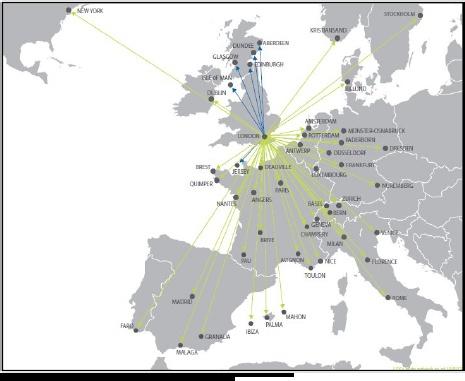
Utilising runway slots
Utilising runway slots to the maximum ensures more airlines land in airports and ferry more passengers (Heathrow and Gatwick Airports 2014). In addition, flight movements are increased. In London, only Heathrow and Gatwick operate their plane slots at full capacity.
Boosting passenger shopping habits
Apart from air travels, airports also gain revenue from retail shops in the airfields. However, the shops suffer from a reduced number of customers. To ensure travellers frequent the outlets, retail departments should ensure they understand customer preferences and offer a wide variety of products. The figure below depicts passenger shopping traits among airports in Europe, including London:

Strategy for a wider point of view
The main strategy recommendation for a wider point of view is for London and its airports to develop good relationships with other airlines and airfields. Stable and profitable relations are developed by providing each airline with a fair business environment, paying attention to laws and treaties, and employing personnel who understand aviation business (Graham 2013). Other strategies include mediating between airlines and regulatory agencies, helping airlines in good and bad times, and keeping airlines informed about airport businesses.
Conclusion
The aviation industry in London has experienced extensive growth over the decades. As a result, the city has some of the busiest airports in Europe, which include Gatwick and Heathrow. In the first part of this report, a number of consequences associated with physical design and capacity limitations for an airport were highlighted. The consequences include limited airport facilities and lack of plane landing slots. In the second part, the identified strategies for London were identified, including improving the infrastructure, as well as expanding and building new airports. In the third part, alternative strategies and future recommendations were identified, including the utilisation of plane slots, creation of stable relationships between airports and airlines, and tapping into new flight routes.
References
Eriksson, S & Steenhuis, H 2015, The global commercial aviation industry, Routledge, London.
Graham, A 2013, Managing airports: an international perspective, 4th and, Routledge, London.
Heathrow and Gatwick Airports: London noise insulation grants scheme 2014. TSO, London.
Marques, R, Simoes, P & Carvalho, P 2015, ‘The influence of the operational environment on efficiency of international airports’, Journal of Advanced Transportation, vol. 49, no. 4, pp. 511-522.
Woolford, S & Warner, C 2015, Flight: the evolution of aviation, Andre Deutsch, Berlin.
